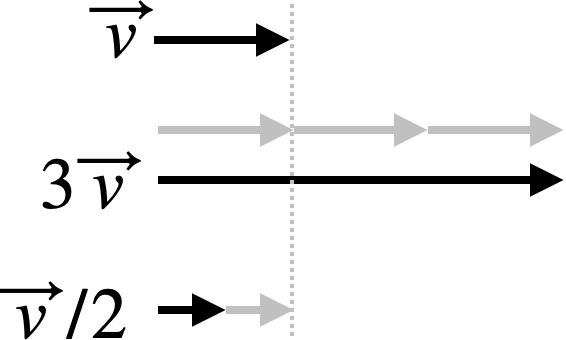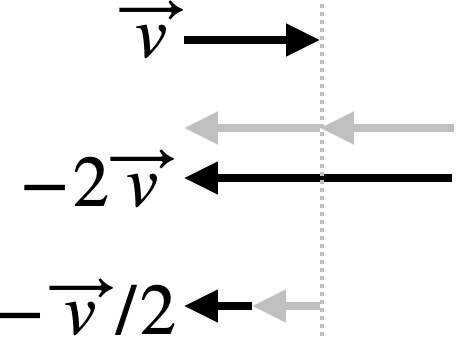3.
Multiplying Vectors
You can multiply or divide a vector by a scalar. If the scalar is a positive number, this only changes its magnitude, not its direction.
If you multiply or divide a vector by a negative scalar, it changes the magnitude and also reverses the direction.

Note
\(3/\vec v=\)???
You can never divide by a vector; it has no meaning to do so. Also, while there are ways to "multiply" vectors together, we will not be using them in this book, so if you ever find yourself multiplying two vectors together, think again. \(\vec v\vec w=\)???